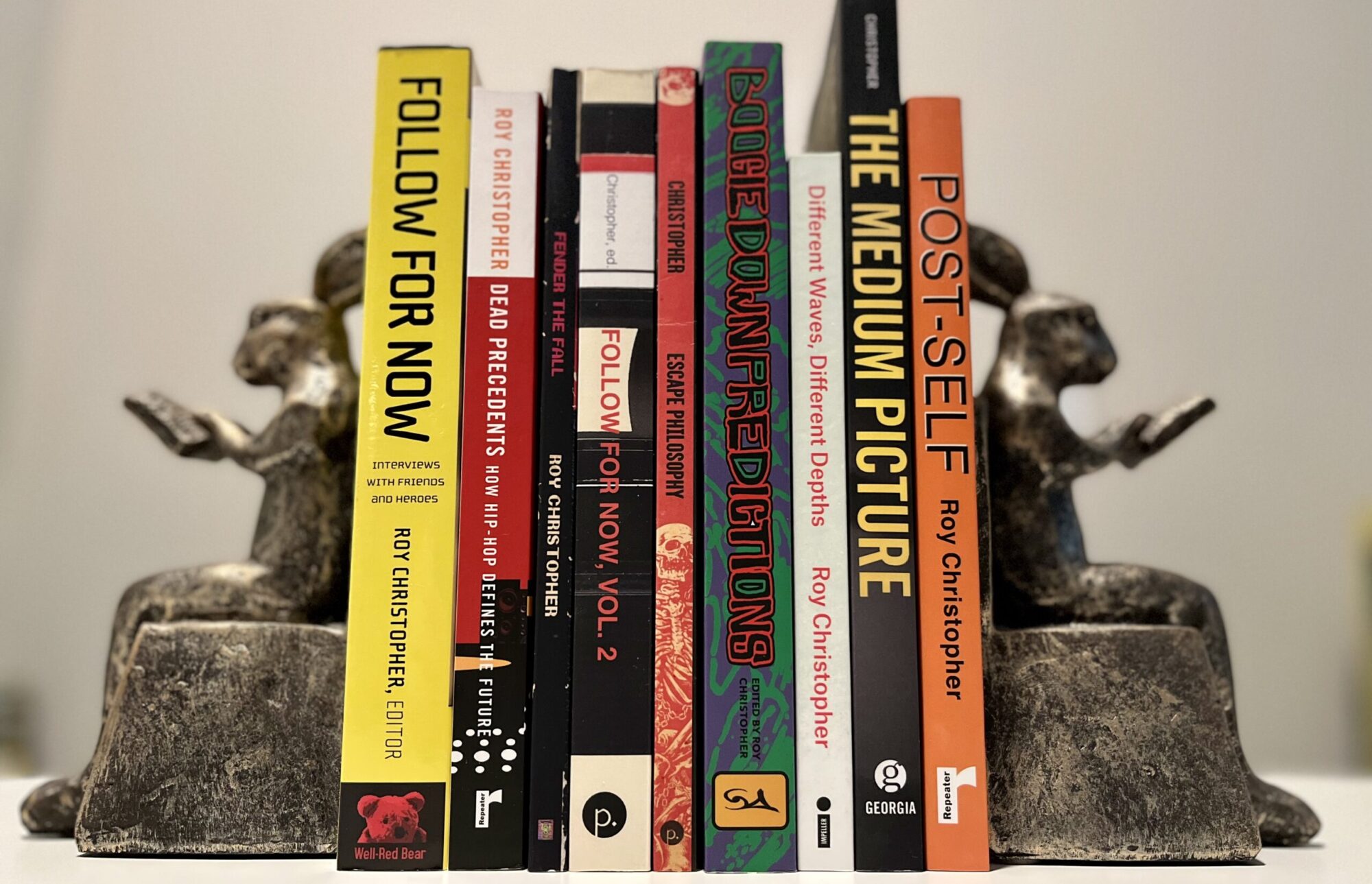 I am proud to announce that I have signed a contract with Repeater Books for my book about cyberpunk and hip-hop. Titled Dead Precedents: How Hip-Hop Defines the Future, the book uses the means and methods of cyberculture and hauntology to thoughtfully remap hip-hop’s spread from around the way to around the world. Its central argument is that the cultural practices of hip-hop culture are the blueprint to 21st century culture, and that an understanding of the appropriation of language and technology is an understanding of the now.
I am proud to announce that I have signed a contract with Repeater Books for my book about cyberpunk and hip-hop. Titled Dead Precedents: How Hip-Hop Defines the Future, the book uses the means and methods of cyberculture and hauntology to thoughtfully remap hip-hop’s spread from around the way to around the world. Its central argument is that the cultural practices of hip-hop culture are the blueprint to 21st century culture, and that an understanding of the appropriation of language and technology is an understanding of the now.
Here is an excerpt from the first chapter, “Endangered Theses”:
Though their roots go back much further, the subcultures of hip-hop and cyberpunk emerged in the mass mind during the 1980s. Sometimes they’re both self-consciously of the era, but digging through their artifacts and narratives, we will see the seeds of our times sprouting… My original guiding premise was that hip-hop culture provides the blueprint to 21st century culture. After researching and writing this book, I am even more convinced that this is true. If we take hip-hop as a community of practice, then the cultural practices of the culture inform the new century in new ways… The heroes of this book are the architects of the future: emcees, DJs, poets, artists, scholars, theorists, writers. If they didn’t invent anything but reinvented everything, then that everything is where we live now. Forget what you know about time and causation. This is a new fossil record with all new futures.

Repeater was founded by the crew that brought us Zer0 Books. Their mission statement is as follows:
Radical change is possible and necessary but only if alternative thinking has the courage to move out of the margins. Repeater is committed to bringing the periphery to the centre, taking the underground overground, and publishing books that will bring new ideas to a new public. We know that any encounter with the mainstream risks corrupting the tidiness of untested ideals, but we believe that it is better to get our hands dirty than worry about keeping our souls pure.
I’m super excited to be working with Tariq Goddard, Mark Fisher, Matteo Mandarini, Alex Niven, and Tamar Shlaim on this project, and to be joining authors Christiana Spens, Dawn Foster, Steven Shaviro, Steve Finbow, Eugene Thacker, Kodwo Eshun, Pamela Lu, Adrian West, Graham Harman, Mark Fisher, David Stubbs, Evan Calder Williams, Alberto Toscano, and others on Repeater.
Dead Precedents will be out on March 19, 2019.
















